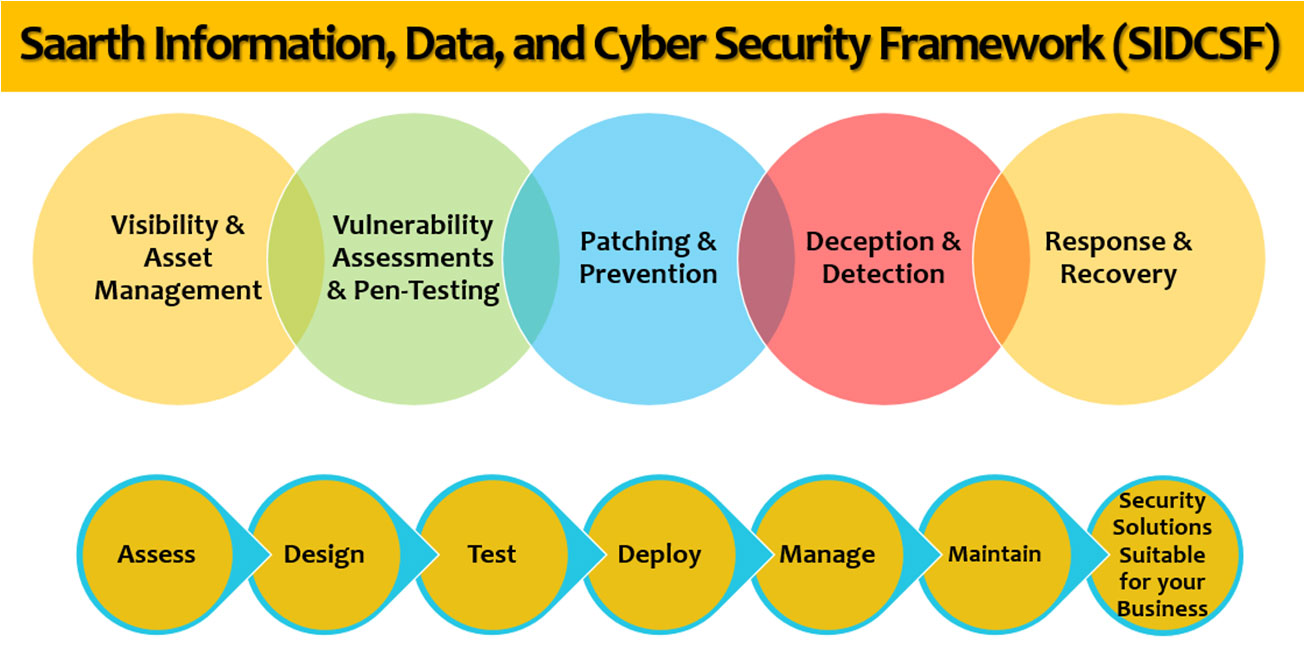SAARTH Information, Data, and Cyber Security Framework
SIDCSF enables and empowers our clients to take well informed and right (SAARTH) decisions to combat business risks and accelerate business growth.
We have simplified security framework that is practical and can realistically be implemented across any business domains of any size and shape. SIDCSF focuses on essential pillars of the security frameworks and standards accepted worldwide.
For knowing how SIDCS Framework can enable and empower you to take decisions that are appropriate to your business, please get in touch with us.



